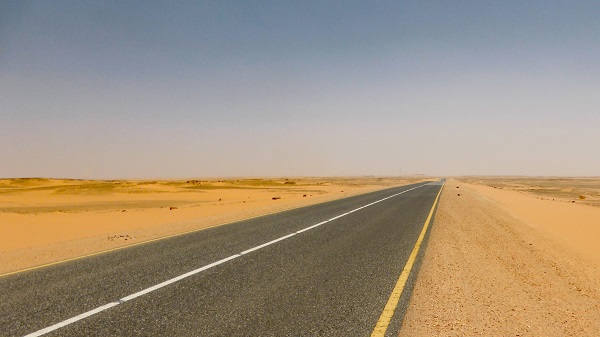The Trans-Sahara Highway, linking West Africa to North Africa from Lagos to Algiers, has entered its final construction phase.
The 9,400-kilometer road is critical to establishing the African Continental Free Trade Area.
The African Development Fund, the African Development Bank Group’s concessional lending window, is one of the key financiers.
In Niger, the junction between North and West Africa, cross-border traffic is increasing following the construction of the Farié bridge. The Bank Group’s project manager in Niger, Albéric Houssou Olaya Cestmir, speaks about this pan-African integration project.
What is the status of the Trans-Sahara Road in Niger?
The construction of the Trans-Sahara Road in Niger is progressing well, with 1,890 kilometers of the total 1,950 kilometers completed, which is 97%.
What works are outstanding on the Niger section of the project, and within what time frame?
There is still a need to reinforce the base layer, which has deteriorated due to bad weather. In addition, paving and signaling work is still in the planning phase, including completing aspects of the environmental and social management plan, e.g. installing boreholes and fixing platforms.
The related developments around and on the banks of the Farié bridge on the Niger River, are yet to be completed.
There are boreholes to be drilled and equipped and construction of classrooms and type 1 integrated health centers with playgrounds. The deadline for completing all remaining activities (road and related facilities) is 12 months.
Your latest mid-term evaluation report mentions an increase in road traffic and the movement of people at the Algerian-Nigerian and Chadian-Nigerian borders. Doesn’t this indicate that the project is important to the local communities and transporters?
With the road development at almost 100% and asphalting at 60%, coupled with the reopening of the Algerian-Nigerian border in 2021, there is renewed interest among the population and transporters. Travel time has decreased and new economic opportunities are available to the local communities in the project’s influence area. We have also noted increased traffic at the Chad-Niger border due to Niger’s role as a transit country for supplies to Chad from Algeria and Nigeria.
What is the status of plans to build related facilities to benefit the population in the project area?
This project is designed in an inclusive and integrated manner to strengthen the resilience of the populations in the project area. Related developments represent about 20% of the total project and are intended to improve the lives of the people.
The project has constructed 18 boreholes, including 14 on the Arlit-Assamaka road, 16 classrooms, offices and boreholes equipped with solar panels, two rest areas, two animal loading and unloading stations, 190 street lights, and other works. These investments, worth $4.98 million or 2.5 billion CFA francs, are still being made in Gothèye and Kouthèye communes.
What role does the African Development Fund play in financing the Niger section of the Trans-Sahara Highway?
The African Development Fund is the largest contributor to the Trans-Sahara Highway financing. The Fund’s share amounts to $119.32 million or 68.14% of the project’s total cost in Niger ($175.10 million).
The project’s alignment with the 2013-2022 Long-Term Strategy, which, among other things, aims at providing affordable access to reliable electricity and transport infrastructure within the framework of inclusive growth, justifies the Bank Group’s intervention.
The Trans-Sahara is one of the main trans-African corridors championed by the African Union Commission as the backbone of the continent’s development.
Also Read
Norrsken Kigali House boosts Kigali prospects
A look at Kenya’s real estate market in 2022

